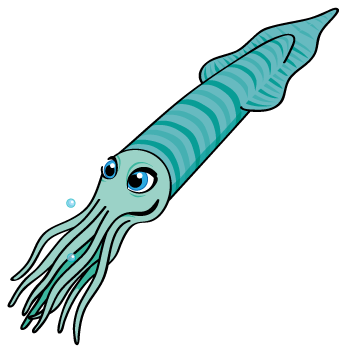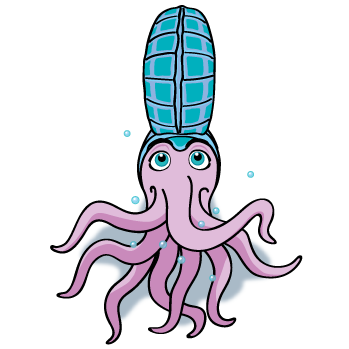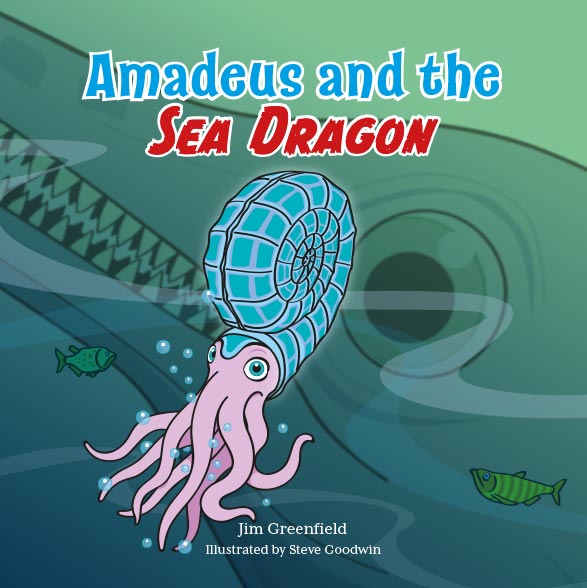Life as a young Jurassic Ammonite is full of challenges, from learning to swim, to avoiding the large creatures that like to eat ammonites for dinner!
Amadeus lives in the warm tropical seas that covered what is now southern England. He lives with his family in an area known as The Ven, and often spends his days playing with the other Jurassic creatures.
In our first book Amadeus and the Sea Dragon Amadeus is swept away after a sea tremor, and finds himself in unfamiliar seas. He needs to find his way home, but the jurassic seas are not a safe place for a young ammonite all alone.
Order your copy now from our online store.
Order now and the postage is FREE!
“A great introductory story about life in the Jurassic Seas, that had me in fits of giggles. Educational, funny and a nice story.” Ali Ferris, Warden - Charmouth Heritage Coast Centre
“My children loved the story, which also introduces the creatures that formed the fossils we search for on our guided fossil hunts” Martin Curtis – jurassiccoastguides.co.uk
“Featuring real Jurassic creatures, the story has it all, action, adventure, humour, suspense and a happy ending!” Paddy Howe – Lyme Regis Museum Fossil Walks



Amadeus (Ammonite)

Amadeus is a young ammonite who lived around 180 million years ago. At this time the world looked very different, with all the continents joined together.
Ammonites no longer exist today, but you can still see their relations - octopuses, squid, and cuttlefish.
As in our story Jurassic Ammonites did indeed swim backwards, much as squid do today. Like squid, they probably squirted water from a tube next to their mouth.
Ammonites existed over millions of years, with many different species developing in a wide range of shapes and sizes.
In the past people called ammonites Snakestones, as they believed ammonite fossils were in fact coiled snakes which had been turned to stone by the Christian Saint Hilda.
But the name Ammonite comes from ancient Greece as ammonites resembled the coiled horns from the Egyptian ram-headed god Ammon.
Beate (Belemnite)

Belemnites were other Jurassic sea creatures which are now extinct. They looked similar to squid today.
In our stories Beate is a Belemnite who lived in The Ven, and was a friend of Amadeus.
Like Ammonites, Belemnites also swam backwards. using squirts of water to propel them. They had ink sacks which could create clouds of black ink to help them defend themselves.
Jurassic seas must have been incredibly busy and confusing places with so many creatures swimming backwards!
Many years ago the fossiled remains of Belemnites were known as Thunderbolts as people thought they were the remains of lightening strikes.
Sea Lilies (Crinoids)

Sea Lilies, or Crinoids as they are more properly known, still exist in many seas today.
They are very easily mistaken for plants, but are in fact animals, who are related to Starfish and Sea Urchins.
Crinoids come in many different shapes and sizes, with many more in the past who no longer exist today. The Jurassic Crinoids often had a long stem, with the body (or 'calyx') at the top, and arms or tentacles above that.
The Crinoid's mouth is on the top of it's body, but so is its bottom, so they are right next to each other!
In mediaeval Lindisfarne parts of fossiled Crinoid stems were strung together as a necklace and called St. Cuthberts beads. In other parts of the country they were known as Fairy Money.
Sea Dragon (Ichthyosaur)

Although the Ichthyosaur may look a little like a dolphin, they are not related.
Ichthyosaurs existed for millions of years, and are believed to have evolved from land living reptiles who returned to the seas.
As a result early Ichthyosaurs had lizard like bodies and tails, before eventually evolving dorsel fins and fish like tails.
With rows of many sharp teeth, Ichthyosaurs were dangerous hunters, and fossil evidence shows they enjoyed a diet of Ammonites and Belemnites.
In the 1830s an avid, yet eccentric, collector of Ichthyosaur fossils believed that they were the creations of the Devil, and referred to them as Sea Dragons. It is a description that is still used today.
The name Ichthyosaurus comes from the Greek for 'fish lizard'.


